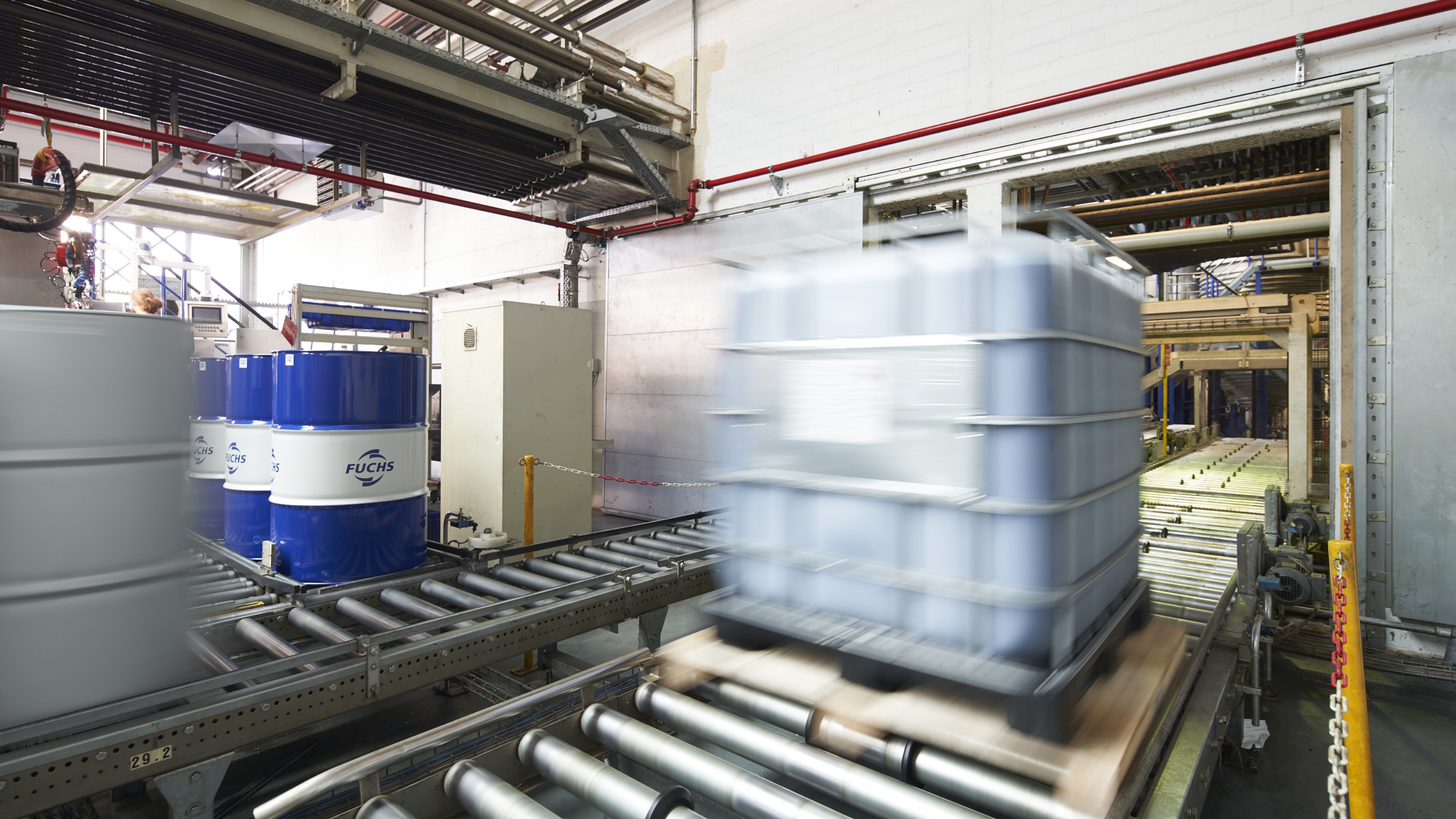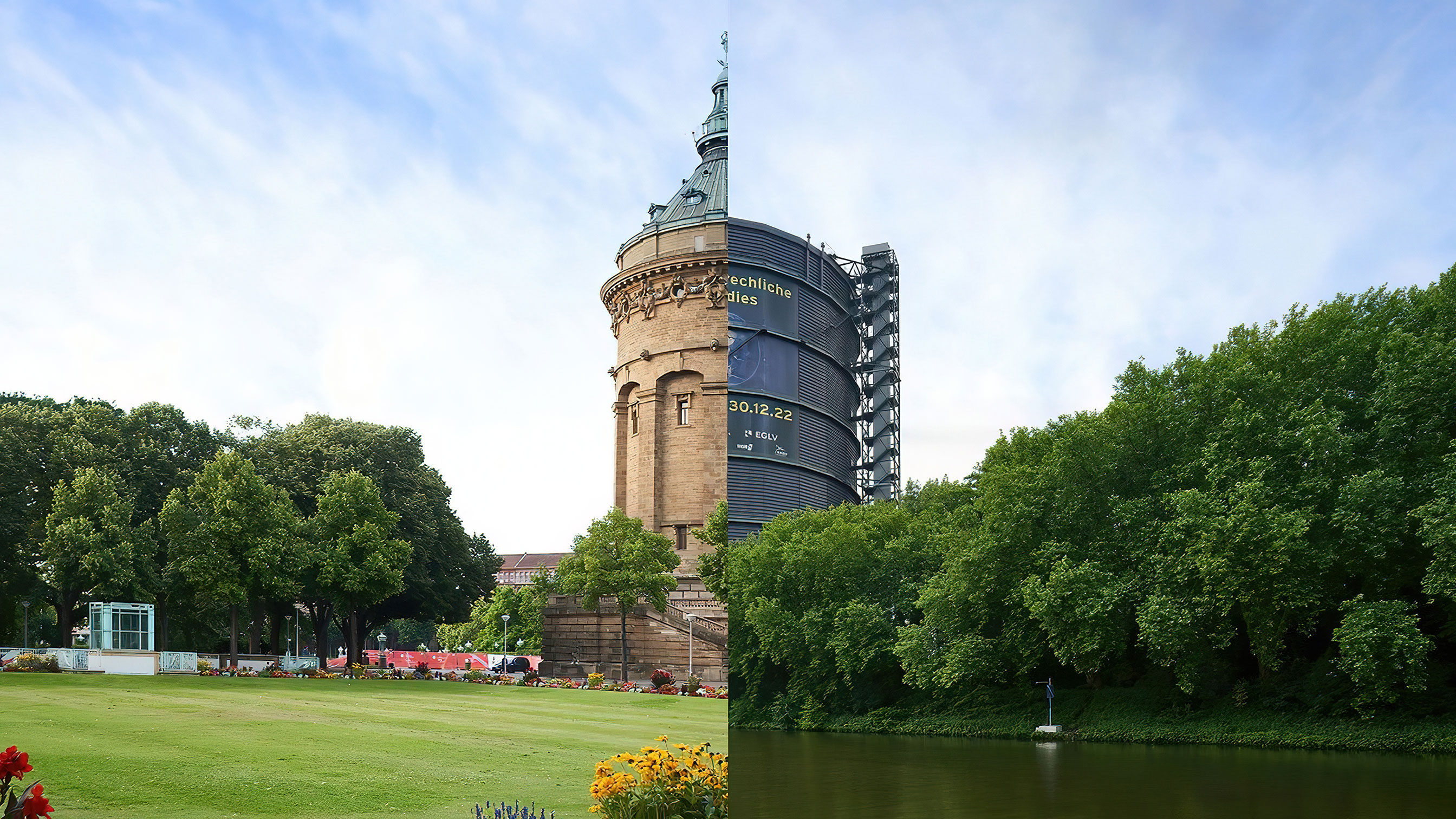Renewable raw materials are all the rage right now, but the ZeroCarb FP research alliance is going one step further. They want to make certain kinds of waste the basis of high-value products. FUCHS is working with project partners to, among other things, obtain key components of different lubricants from old frying fat using an innovative, resource-conserving process.
The word “ZeroCarb” is printed on the white pot, which, judging by its shape, looks like it could contain face cream. The laboratory technician uses a spatula to scoop up a small amount of grease and spread it on a small metal plate. This is part of a piece of equipment on the laboratory bench, which from a distance resembles a food processor – but with a connected control PC. The laboratory technician presses a button to start the measurement: A second metal plate slides down onto the grease and, almost imperceptibly, starts to rotate.
The head of advanced development at FUCHS SCHMIERSTOFFE GmbH in Mannheim is standing next to her, talking excitedly about everything that this relatively simple-looking piece of equipment can do. The equipment in question is a rheometer, whose name is derived from the Greek word for “flow.” “Many lubricants are not merely viscous; they have a small elastic component, too.” He places the palm of one hand loosely on the other and turns them against each other. “If you twist a layer of lubricant like this, there is a tiny amount of restoring force.” This is what the rheometer measures when it rotates the plates, with precisely predefined parameters such as plate distance and temperature. “The lowest possible speed is two rotations per year. Per year!” emphasizes the department head.
Ultimately, the head of advanced development continues, rheometer testing like this combines multiple standard test procedures for lubricants in a single, automated measuring process. As such, this process is a key element of what he and his staff want to achieve: The developers want to see whether the lubricant in the rheometer – with the first full prototypes from the ZeroCarb research project (see “The ZeroCarb FP strategic alliance”) – behaves exactly as predicted.
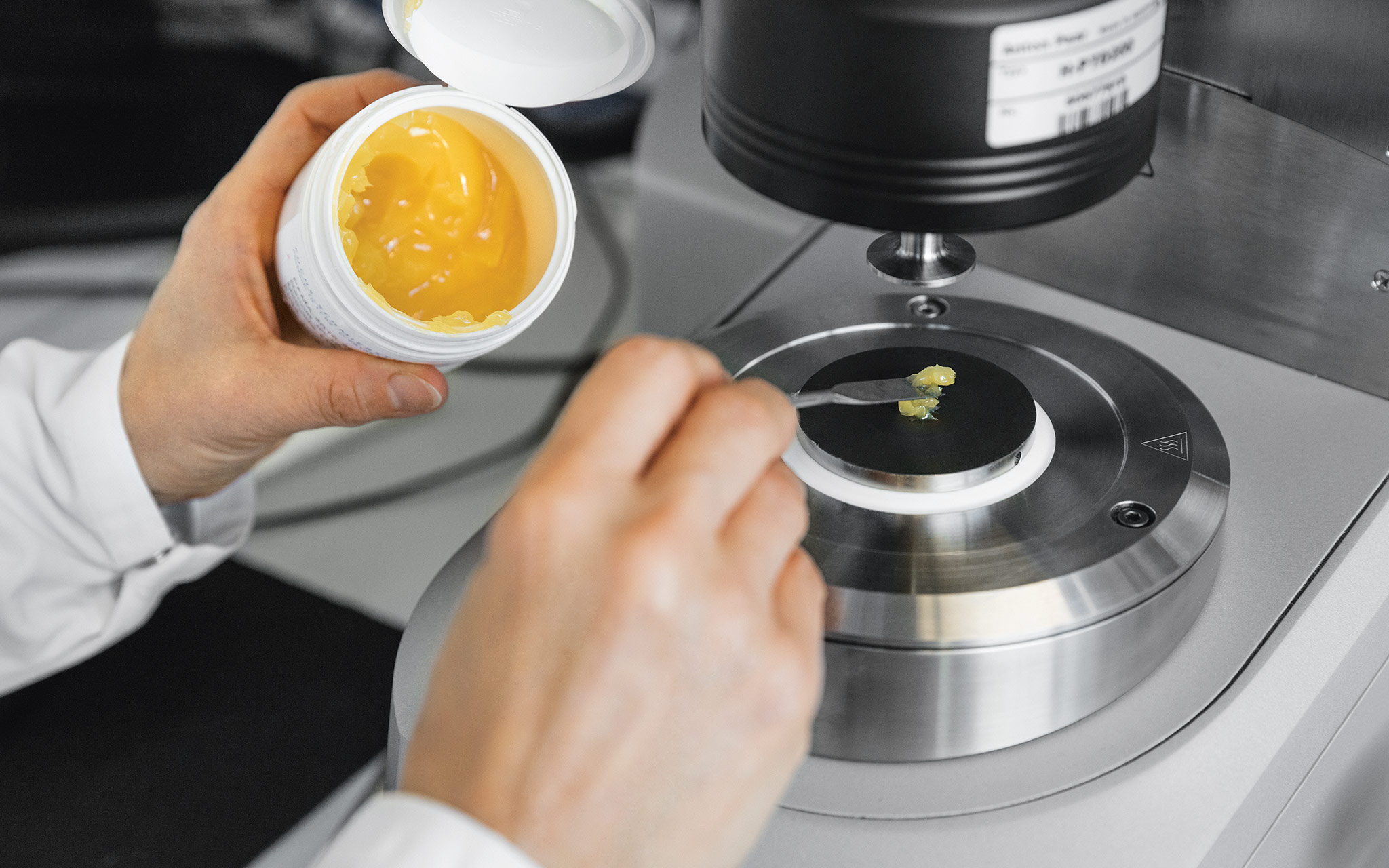
Preparations for a rheometer analysis to ascertain the properties of the lubricant. The smaller picture shows the second, rotating plate in its start position for the measurement. Then the black cover is lowered, meaning that you can no longer see the measurement plates. The cover ensures that the temperature can be regulated to predefined values.
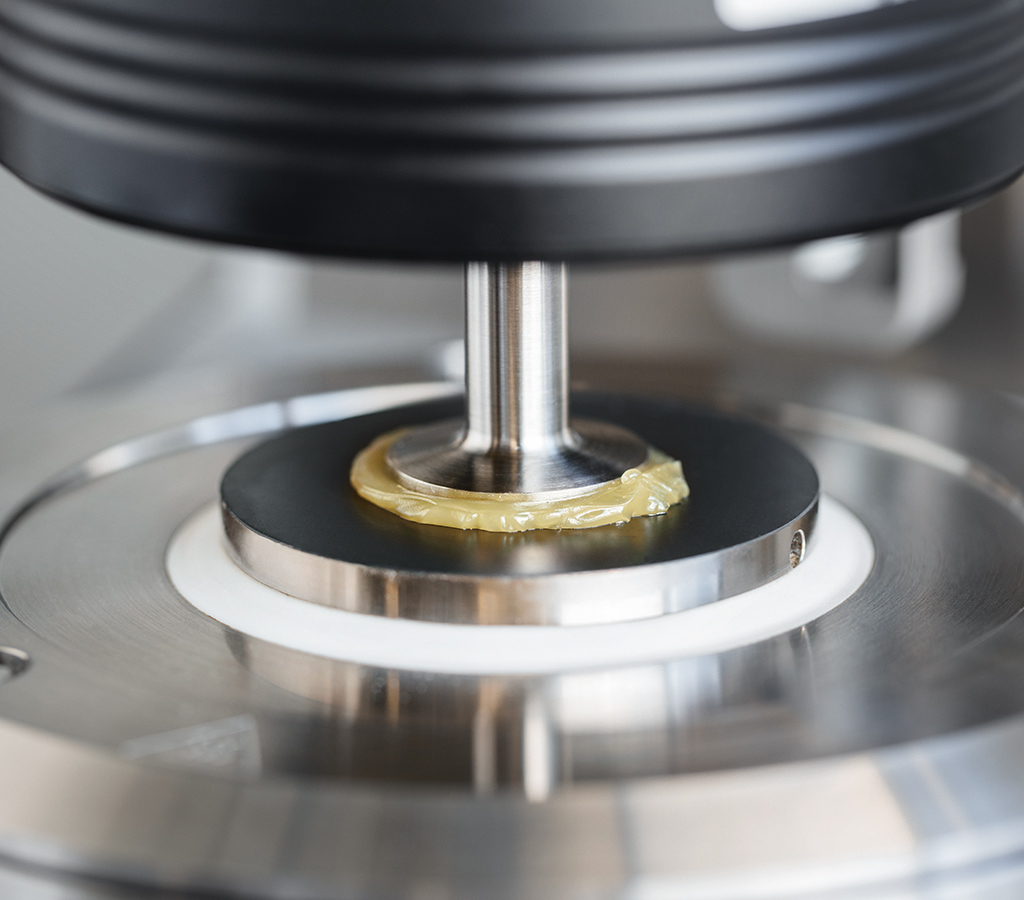
An Unusual Genesis
This might sound unspectacular, but it is an amazing achievement because the ZeroCarb product represents a major advance in terms of sustainability. Thanks to a new synthesis process, one of its key constituents can be obtained from another, sustainable resource: used cooking oil. “In other words, the stuff that chip shops and restaurants up and down the country produce every day as waste,” says the head of advanced development.
This completes the cycle of materials in an ecofriendly manner. Renewable raw materials mean that we no longer have to choose between “food or fuel”, because now we can have “food then fuel.” But the focus is not just on lubricants: The aim of ZeroCarb is to produce other materials, with even more flexible uses. “For FUCHS, this could ultimately represent another major step away from fossil fuels toward sustainably produced raw materials,” continues the head of advanced development, emphasizing the strategic aspect.
The process of refining old frying fat to create a high-quality raw material involves two steps. The first step, in which the fat molecules are split open, is common practice in biodiesel production. The second step, however, is highly innovative and was completely redesigned from the ground up for the ZeroCarb project. An enzyme – a biochemical catalyst produced from living organisms – plays a key role here. “We exploit the synthesis activity seen in the natural world,” says the head of advanced development.
To find out more about the background to this particular step in the production process, you have to travel a good 30 kilometers northeast from the FUCHS laboratories. In a protected industrial, Bauhaus-style building in the attractive town of Zwingenberg, which lies on the Hessian Bergstrasse, are the headquarters of BRAIN AG, in a converted Fissan powder building. This research-focused biotechnology company is a project partner of FUCHS.
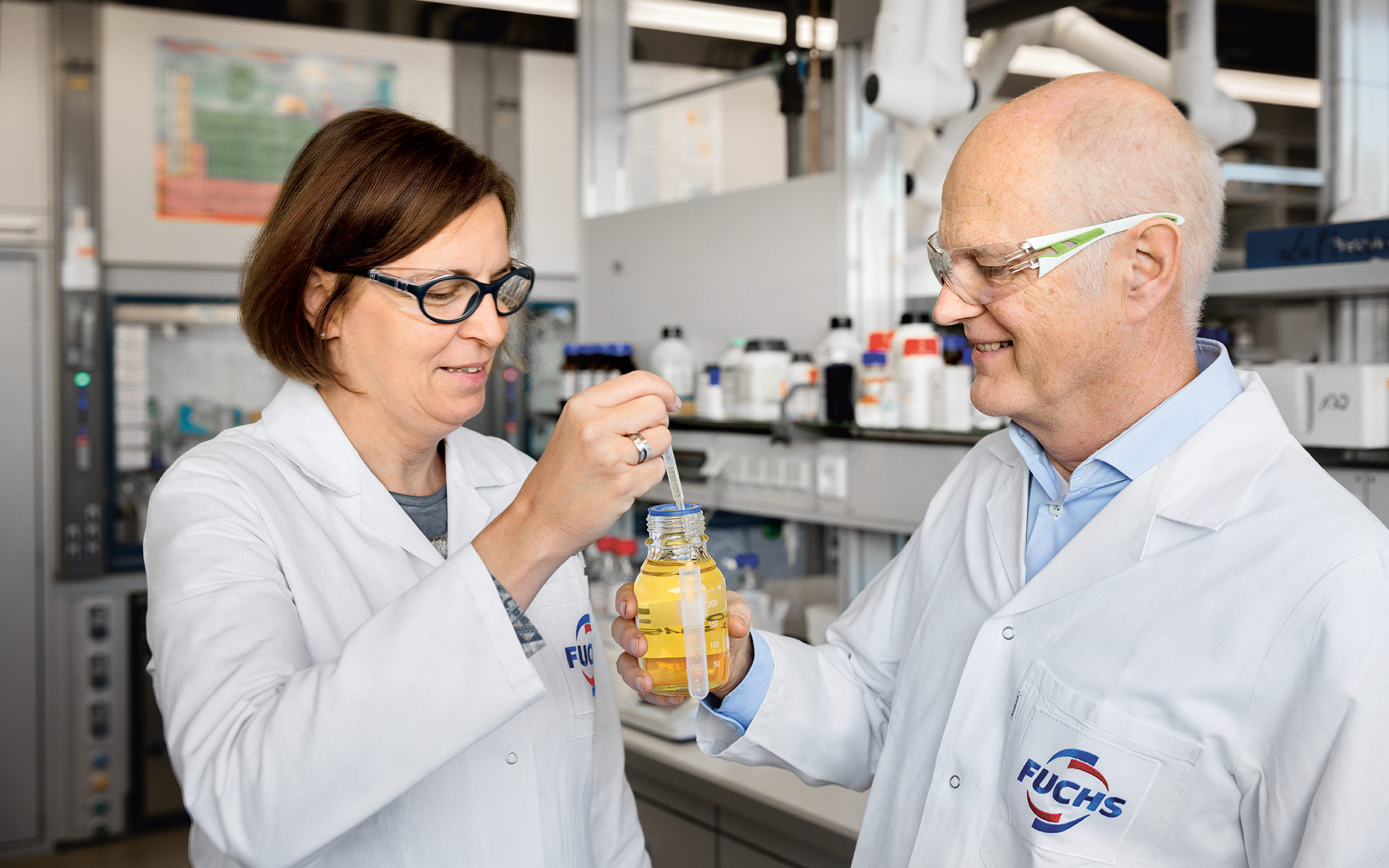
How can we improve these oils so that we are even better equipped to deal with upcoming technological advances? The head of advanced development talks to his team leader. Her tasks include coordinating the ZeroCarb activities at FUCHS.
Refrigerators Full of Bacteria and Algae
We are first led into a nondescript underground room containing perhaps a dozen wide refrigerators. “This is the heart of BRAIN AG – our bioarchive,” explains Dr. Wolfgang Aehle. The highly experienced chemist is responsible for corporate development in the field of performance proteins and enzymes. “These refrigerators contain our collection of microorganisms and microalgae – in total, around 53,000 different strains isolated from, for example, ground or water samples.”
These largely un-researched bacteria, yeasts and algae produce countless enzymes to help them biochemically convert molecules from their natural environment for their own metabolic processes. But some of these enzymes are potentially viable for technical applications. In domestic products, for example, they can help to increase the stain removal properties of washing agents; or they can modify organic molecules from certain kinds of waste so that they can potentially be used in the production of lubricants.
To ensure the practicability of this application, the experts in Zwingenberg first need detailed input, which is to come from the enzyme. This input was provided, in this case, by the FUCHS advanced development team, explains Dr. Birgit Heinze, ZeroCarb project manager at BRAIN. And now this is where the expertise of the biotechnology specialists comes in. “The first step is screening,” says the project manager. This is a process that involves identifying potential enzyme candidates and producers, for example using microorganisms that the researchers know possess the ability to functionalize fatty acids. One door down, in the molecular biology laboratory, the microorganisms are cultivated and then tested for their ability to produce the required molecule.
“This qualitative preselection process is followed by the quantitative examination,” continues Birgit Heinze. This process involves clarifying, for example, exactly how and how effectively the enzyme works. “Parallel to this, we start to develop the actual biocatalytic process.” To simulate the technical process in which the enzyme is to convert the raw material into the final product, the scientists use a SpinChem reactor – a saucepan-sized glass container with a stirrer and perforated chamber attached. This contains the enzyme, which is on a carrier material. “Here we can see, for example, how stable the enzyme is,” says the project manager.
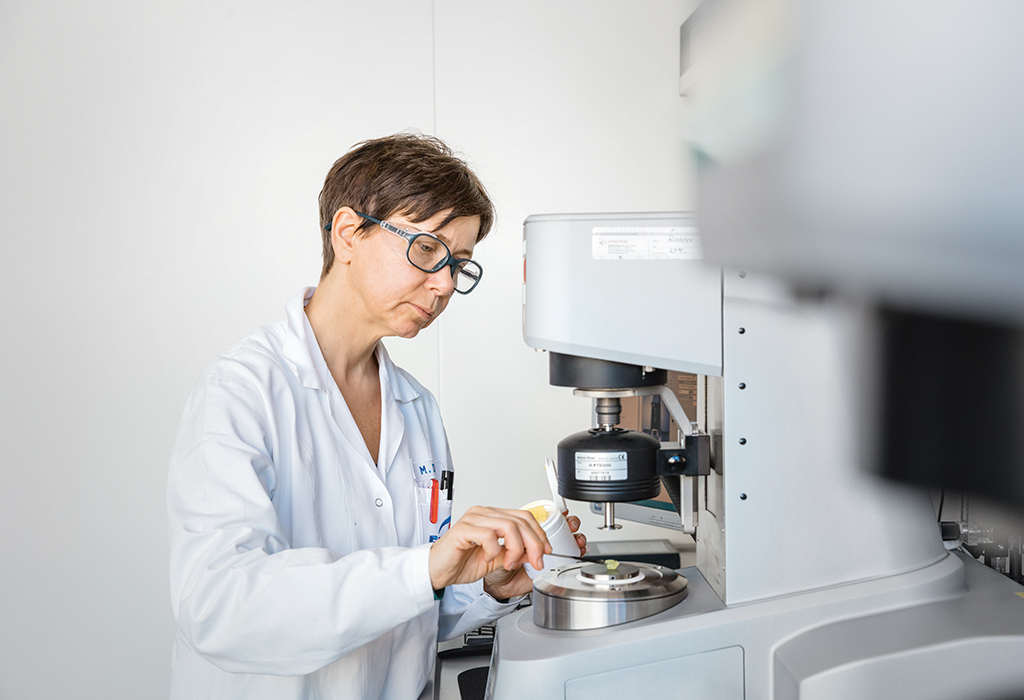
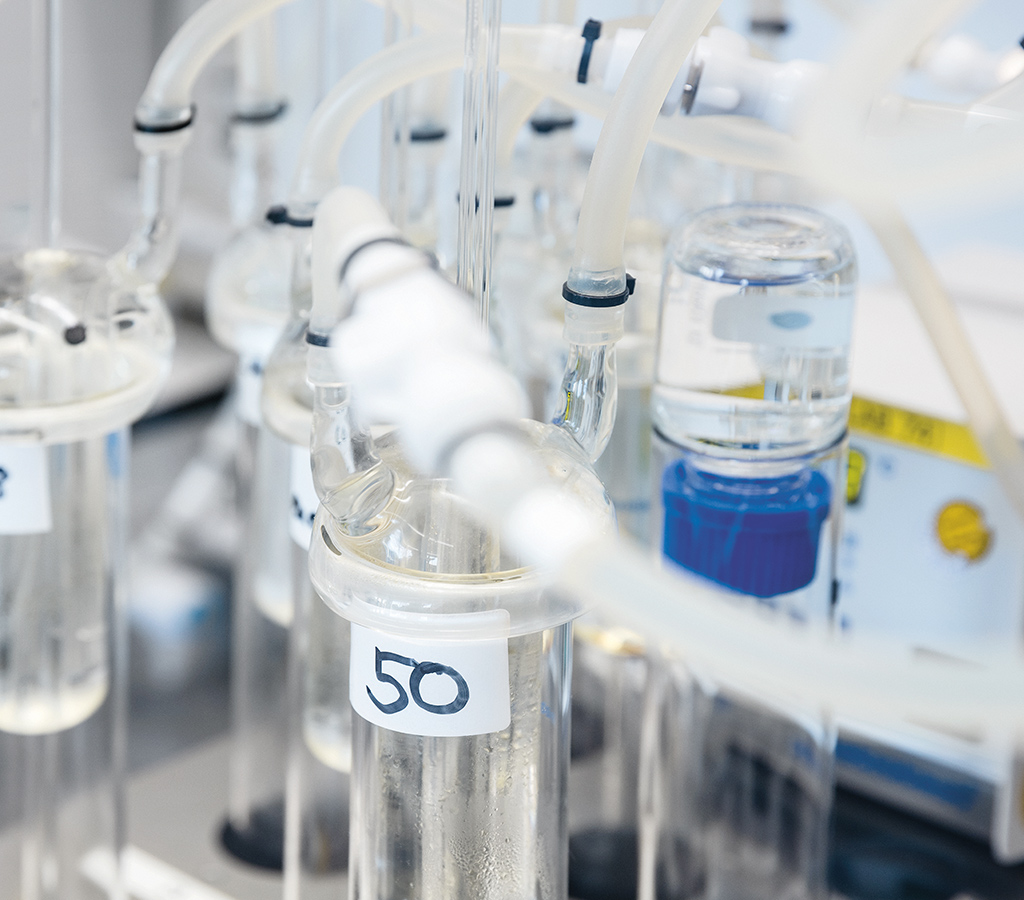
Close-up of a piece of apparatus for special, long-term stability testing.
The Challenge of Upscaling
Using different methods, the researchers can optimize the performance of the enzyme, for example by promoting the evolutionary development of the original microorganism in the hope that the enzyme, too, will evolve and become more effective. “At the same time, we have to develop a second process: the biotechnological production of the enzyme itself,” says Wolfgang Aehle. It is not generally the original organism that is used here, but instead a well-researched production organism such as coliform bacteria. “Into this we transfer the genetic blueprint for the desired enzyme so that the organism can then produce this enzyme.”
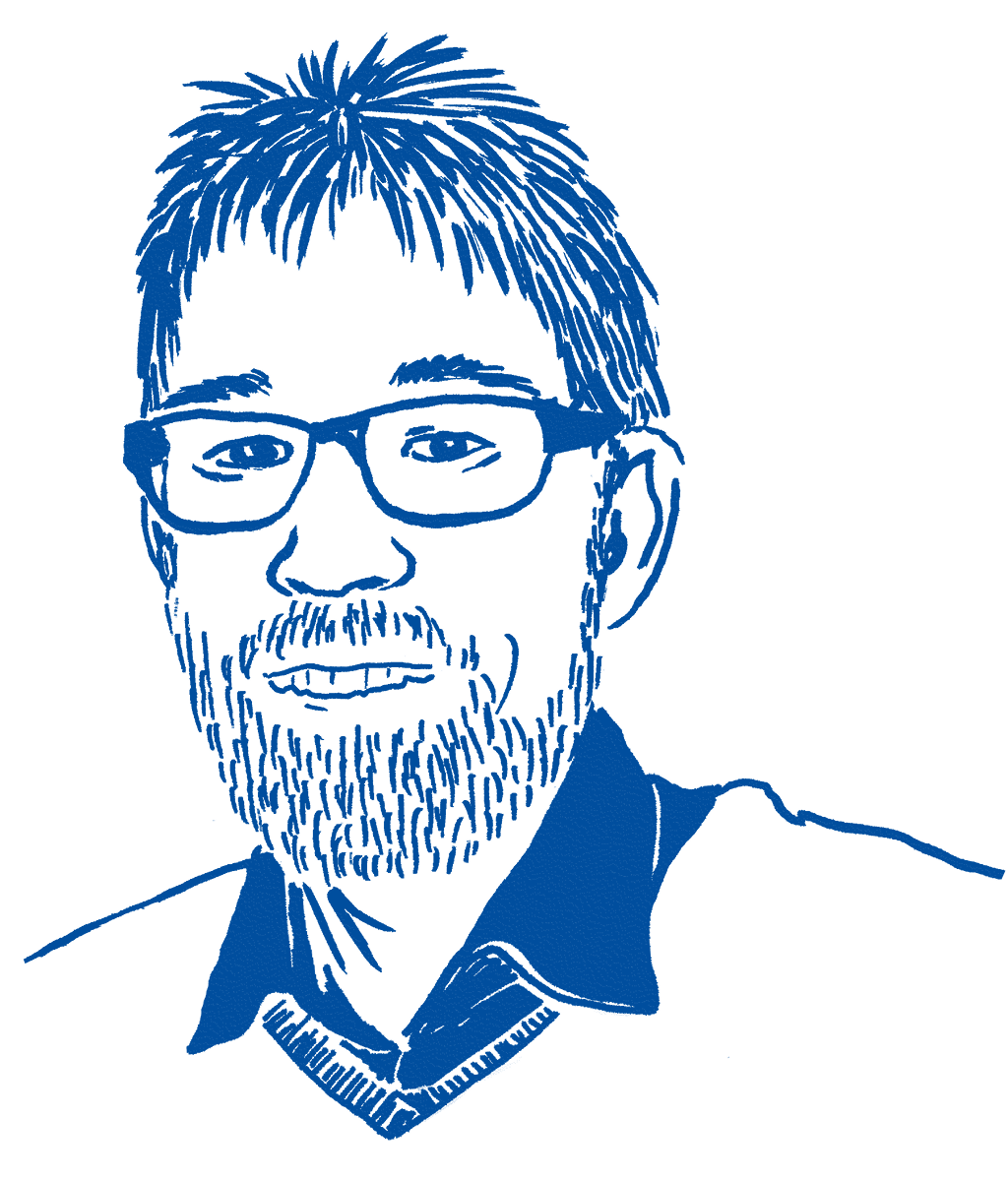
Dirk Bogaczyk Employee from the River Emscher water management association
Dirk Bogaczyk,
Employee from the River Emscher water management association (Emschergenossenschaft) in Essen and overall coordinator for the first phase of the ZeroCarb FP strategic alliance (2013 – 2016)
Mr. Bogaczyk, what is the goal of ZeroCarb FP?
The goal is essentially to create a closed, highly effective carbon cycle. To achieve this, carbon compounds from industrial waste and byproduct flows are to be biotechnologically converted – that is, using microorganisms – into new resources. We are experiencing a raw material revolution. Many industries are trying to reduce their dependence on petroleum, switch to sustainably produced raw materials and employ alternative, ecofriendly processes. Politicians are supporting this revolution with the “National Research Strategy BioEconomy 2030”, which was initiated in 2010. And given global economic and population trends, this revolution cannot come soon enough. The demand for food is expected to double by 2050, as is the volume of waste; in addition, the volume of bioplastics is expected to triple.
What, specifically, is the team researching?
The team is working in different areas. For us in the water industry association, we are, of course, interested in the processes involved in extracting carbon and other resources from wastewater. Other subprograms are focused on, for example, glycerin, a residual product of biodiesel production, while others are focusing on carbon dioxide in flue gas. With the help of biotechnological processes, these resources are to be used to produce flexible platform chemicals, bioplastics and additives for lubricants.
What are the biggest challenges?
In the field of biotechnology, upscaling is always tricky. In the research phase, producing quantities in the milliliter or milligram range is generally considered an achievement. We do not yet know whether and how processes can subsequently be upscaled to the liter or even cubic-meter range. Another challenge is to leverage synergies. Previously, the subprograms operated relatively independently, but now we have to foster a collaborative mindset and use processes and systems for a variety of applications and resource streams. This is closely connected with the third major challenge. Ultimately, it’s not enough simply to develop processes that function. They also have to be economically competitive and, ideally, remain competitive even in the face of ever-changing conditions such as fluctuations in the price of oil or demand for certain specific raw materials.
The BRAIN employee opens the door to another laboratory, where we can see not just small glass reactors, but also vast steel vessels, the biggest of which is several stories high. Aehle explains: “One major challenge is upscaling. When the microorganisms grow as we want them to in a one-liter fermenter, this does not necessarily mean that the process will also function on a larger scale.” The researchers at BRAIN want to control enzyme production in a fermenter with a capacity of least 200 liters before approving the process for industrial-scale production.
Over the course of the three-year project research phase, which has just come to an end, even the production of just one kilo of raw material may be considered a success. “We needed around three grams of enzymes for that,” says Birgit Heinze. At FUCHS in Mannheim, however, this one kilo of raw material helped to produce several kilos of lubricant. “In preliminary experiments, we worked with just 10 grams and more of raw material. To produce such tiny quantities of lubricants, the colleagues stood there with a thermometer for one or two hours and did the stirring themselves,” explains the advanced development team leader, who is coordinating the ZeroCarb project at FUCHS. “And in the pre-development phase, our state-of-the-art measuring techniques mean that, even with just a few grams, we can conduct highly informative investigations.”
Crucial to this is the aforementioned rheometer. In just a few simple steps, it can be modified for tribometric tests – that is, measurements where friction and wear also play a role. “On the basis of these results, state-of-the-art simulation methods allow us to make astonishingly accurate predictions for real-life applications,” says the head of advanced development. And this is why he has no doubt that ZeroCarb lubricants will fulfill all functional requirements. Nevertheless, proper application tests are still necessary for demonstrating compliance with all specifications. These become possible in the next scaling step, i.e. with around 50 kilos of raw material.
But there’s another soon-to-be-addressed aspect that the lubricant developer finds even more exciting: the minimum requirements. The team leader asks a crucial question: “How pure do the raw materials have to be? This will ultimately determine the price.” So in addition to all the technical activities, another challenge facing FUCHS and its partners during the scheduled project runtime up to 2022 will be to address the various economic issues, which have so far not been considered in any great detai

